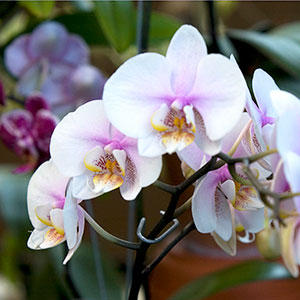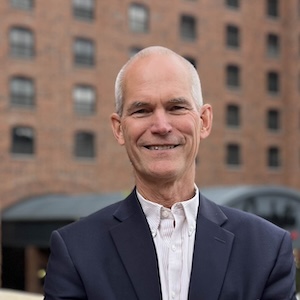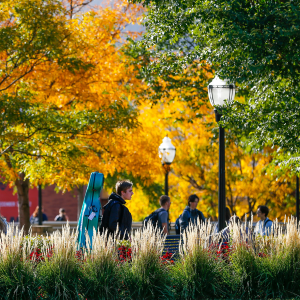Peter Moe
Peter Moe became director of the Minnesota Landscape Arboretum on September 16, 2016. He recently took some time to answer a few of our questions.
A Q&A With Peter Moe
College of Continuing and Professional Studies (CCAPS): Did you know early on that horticulture was the discipline for you?
Peter Moe: I worked in a garden center in Richfield for four years when I was 15. I started my undergrad coursework at the U of M in Biology but switched to Horticulture Science in my second quarter. Two years later when I had just turned 20, I visited the Arboretum with my mother's garden club and met the grounds supervisor who told me that they had job openings. I started work the next day, and I never left.
CCAPS: How have you seen the field of horticulture change, academically?
PM: Some things, including the importance of a strong science background in chemistry, biochemistry, plant pathology, and entomology, have not changed. However, there is certainly more emphasis now on native plant restoration, edible landscaping, green infrastructure to protect water quality, and related topics. Integrated pest management is part of all plant production or maintenance systems now, but that topic was just getting established in 1972.
CCAPS: What kind of advice would you give to students who are interested in a career in horticulture?
PM: I would encourage them to take full advantage of the classes available to them and get to know professors and graduate students who they may interact with in the future. The horticulture classes are essential, but having strong writing, speaking, and computer skills is crucial, too. It is essential to work in the field or do an internship during breaks or part time.
CCAPS: What is the best part of your job?
PM: I love working with our horticultural staff to create beautiful gardens that people will travel long distances to see. I also appreciate hearing from people who have been visiting the Arboretum since they were children and how they have seen the Arboretum grow but still remain a destination for family outings, weddings, or other events.
"Horticulture is a great field where you can make a positive difference by growing healthy food crops, creating beauty, or using your knowledge to solve environmental problems."
CCAPS: Do you have a favorite collection or place you like to go on the grounds?
PM: I really enjoy being in the middle of the Flowering Crabapple Collection when it is in full bloom, along with the big tulip display in early May. I like learning more about native plants and being in the woodland wildflower garden in spring and the prairie in late summer.
CCAPS: Can you talk a little bit about the Tashjian Bee and Pollinator Discovery Center and why it is so important?
PM: The Bee Center is designed to teach both children and adults about the importance of pollinators to our food supply and overall plant diversity, as well as provide examples of what everyone can do to increase pollinator populations. For example, everyone can plant flowers that bloom in spring, summer, and fall and look for ways to manage lawns, landscapes, and gardens with fewer pesticides.
CCAPS: The Arboretum recently exceeded its fundraising goal and set a record for attendance last year (with over 460K visitors!). To what do you attribute this rising interest and commitment?
PM: One major factor is that people are seeking places where they can be outside and experience both natural beauty and well maintained and designed gardens. The Arboretum provides accessible native plant restorations, hiking trails, boardwalks, and other great ways to explore the forests, wetlands, and prairies on our 1,200 acres.
We also provide amazing bloom displays, including crabapples, tulips, lilacs, roses, annual flowers, and many other changing gardens throughout the growing season. We add seasonal exhibitions and classes and tours to this, and our staff does a great job of working with news outlets and social media to get the word out.
CCAPS: You have been a key player in the acquisition of a great deal of land. How do you get all the stakeholders (landowners, legislators, local officials, etc.) to buy in, literally, to this expansion?
PM: I always start by talking about our long track record of successful programs, including the fruit breeding program that has resulted in dozens of plant introductions that are grown across Minnesota--and now Honeycrisp and SweeTango apples are grown across the world. I continue by talking about how the Arboretum has grown largely with private contributions and has a similar track record of managing gardens, plant collections, and native plant restorations at a high level over many years.
The Arboretum is committed to managing all areas we have acquired, and that includes controlling invasive species, such as buckthorn and garlic mustard, and making the areas accessible to people. It is important to talk about the value of protecting large blocks of maple-wood forest, which is valuable for maintaining high levels of biodiversity, along with our goal to protect our watershed.
The Arboretum is an amenity for the whole state and certainly for the southwest metropolitan area.
Schedule your visit to the Minnesota Landscape Arboretum.










